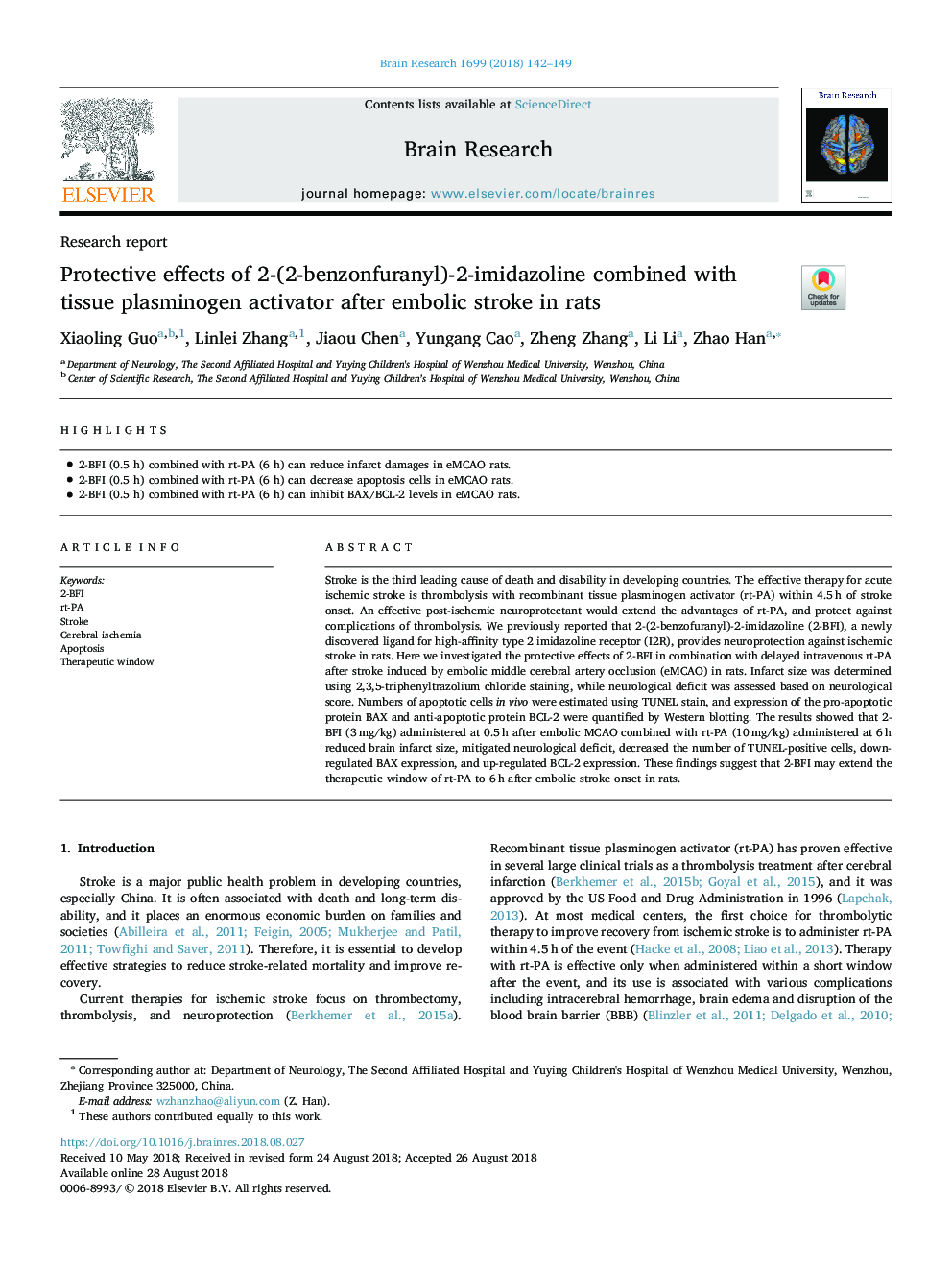| Article ID | Journal | Published Year | Pages | File Type |
|---|---|---|---|---|
| 10106914 | Brain Research | 2018 | 8 Pages |
Abstract
Stroke is the third leading cause of death and disability in developing countries. The effective therapy for acute ischemic stroke is thrombolysis with recombinant tissue plasminogen activator (rt-PA) within 4.5â¯h of stroke onset. An effective post-ischemic neuroprotectant would extend the advantages of rt-PA, and protect against complications of thrombolysis. We previously reported that 2-(2-benzofuranyl)-2-imidazoline (2-BFI), a newly discovered ligand for high-affinity type 2 imidazoline receptor (I2R), provides neuroprotection against ischemic stroke in rats. Here we investigated the protective effects of 2-BFI in combination with delayed intravenous rt-PA after stroke induced by embolic middle cerebral artery occlusion (eMCAO) in rats. Infarct size was determined using 2,3,5-triphenyltrazolium chloride staining, while neurological deficit was assessed based on neurological score. Numbers of apoptotic cells in vivo were estimated using TUNEL stain, and expression of the pro-apoptotic protein BAX and anti-apoptotic protein BCL-2 were quantified by Western blotting. The results showed that 2-BFI (3â¯mg/kg) administered at 0.5â¯h after embolic MCAO combined with rt-PA (10â¯mg/kg) administered at 6â¯h reduced brain infarct size, mitigated neurological deficit, decreased the number of TUNEL-positive cells, down-regulated BAX expression, and up-regulated BCL-2 expression. These findings suggest that 2-BFI may extend the therapeutic window of rt-PA to 6â¯h after embolic stroke onset in rats.
Related Topics
Life Sciences
Neuroscience
Neuroscience (General)
Authors
Xiaoling Guo, Linlei Zhang, Jiaou Chen, Yungang Cao, Zheng Zhang, Li Li, Zhao Han,
